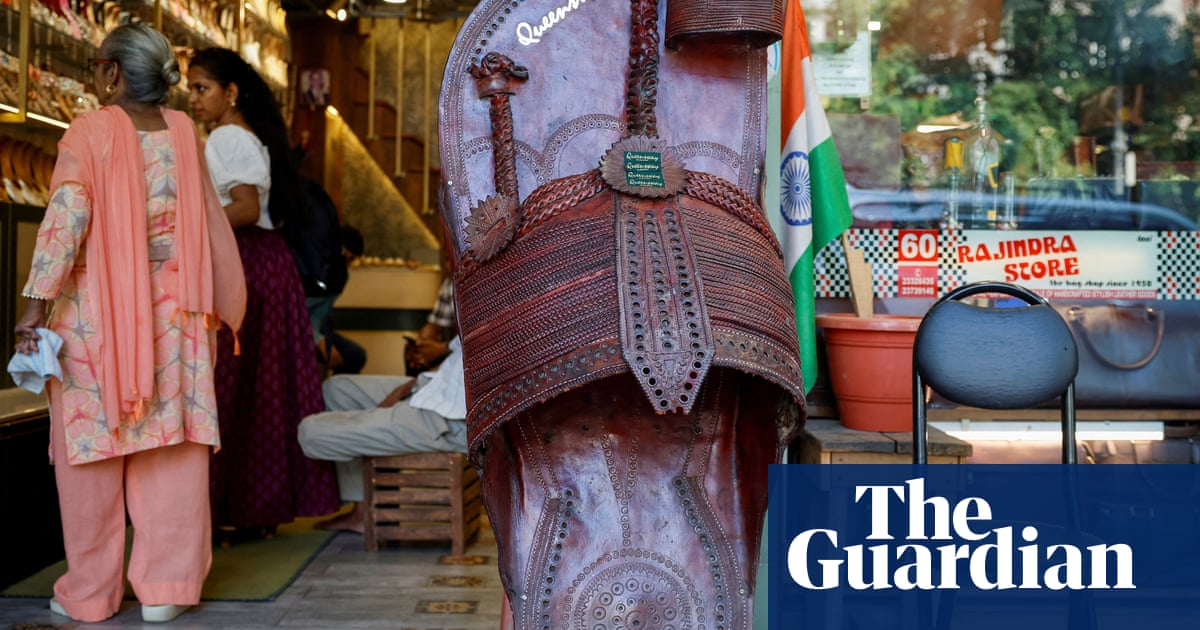Prada has acknowledged that its new leather sandal design was inspired by India’s famous Kolhapuri “chappals” – handcrafted shoes known for their toe-loop design – after facing criticism over its failure to credit the footwear’s origins.
“We acknowledge the sandals … are inspired by traditional Indian handcrafted footwear, with a centuries-old heritage,” Lorenzo Bertelli, the corporate social responsibility chief at the Italian fashion house, said in a letter to the Maharashtra chamber of commerce.
The chamber had complained on behalf of thousands of Kolhapuri sandal-makers after images from Prada’s Milan runway show showed models wearing the open-toe footwear that was virtually identical to the unisex Indian original.
The chamber president, Lalit Gandhi, had said: “The collection includes footwear designs that bear a close resemblance to Kolhapuri sandals, a traditional handcrafted leather sandal that has been awarded ‘geographical indication’ status by the government of India in 2019.”
The geographical indication tag verifies that a product originates in a specific place. The sandals’ origins go back to the 12th century, to the city of Kolhapur in western Maharashtra state.
The buffalo-hide shoes with their distinctive braided T-strap are worn by everyone from farmers to millennials and business leaders.
The sight of models walking the runway last week in the footwear blandly described as “leather flat sandals” triggered a widespread backlash in India and charges of “cultural appropriation”.
The row tapped into a broader debate about how global fashion houses frequently repackage traditional craftsmanship as luxury goods without credit or compensation to the original artisans.
The sandals, known for their durability, cost about $12 (£8.75) in India, whereas Prada sandals retail for upwards of $800. Indian artisans “lose, while global brands cash in on our culture”, said Harsh Goenka, the chair of the pharmaceuticals-to-IT conglomerate RPG Group.
As photos of the show spread online, Indian outrage mounted. “From the dusty lanes of Kolhapur to the glitzy runways of Milan … will the world finally give credit where it’s due?” asked the news outlet DNA on X.
Gandhi asked Prada to seek ways for “collaboration or fair compensation that could benefit” Indian craftspeople. Bertelli replied the sandals were still in the “early” design stage, but that Prada was willing to open a “dialogue for meaningful exchange with local Indian artisans”.
“While Indian artisans and small-scale producers excel in craftsmanship, they rarely have access to capital or business acumen” to position their products globally as luxury goods, Dhanendra Kumar, an ex-World Bank executive director, said in India’s Economic Times.
“By not calling their new line of sandals ‘Kolhapuris’, Prada is guilty of monetising cultural appropriation,” Kumar said.
Still, some believe the row could have an unexpected upside. Sales of the sandals have plateaued in India in recent years, but local designers believe the spotlight could boost interest in the classic design, especially among younger consumers.
“Until now, it hadn’t been considered part of the ‘cool’ or aspirational footwear space in India’s luxury market … I truly believe in the ripple effect of what Prada has done,” said Shirin Mann, the founder of Needledust, a label known for its contemporary take on traditional Indian embroidered slip-ons.
Mann could be right. Since Prada’s runway show, Google Trends has shown a rise in searches for Kolhapuri sandals, and retailers report interest has surged, according to local media.
